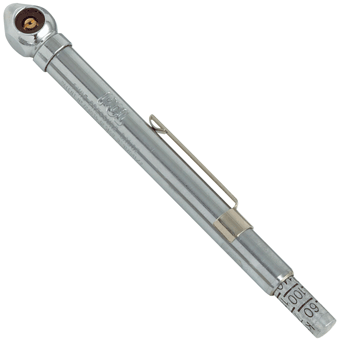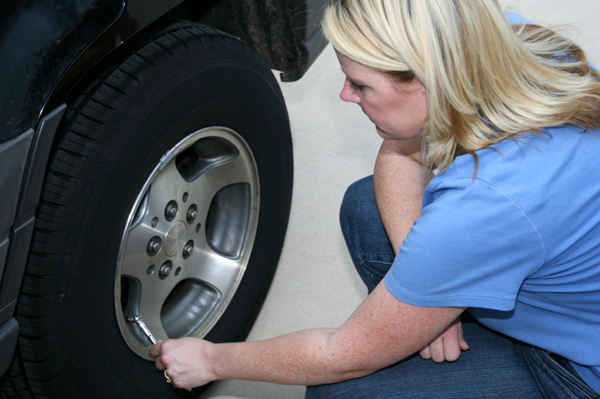I first learned about tire pressure when I came across that funny little metal tool in the glove compartment of my parent’s car. You know, the one that looks like a thick metal pen?
Once the whole concept was explained to me, it still seemed crazy that people would actually pay for air to put in their tires. Shouldn’t air be free?!
Since then, I’ve realized a lot of my friends still don’t know the basics of tire pressure: what it is, why it’s important, how to check it and how to fix it. So this post is an education on just that. I introduce you to tire pressure for dummies!
What is tire pressure?
Explaining tire pressure is fairly simple: it’s the amount of air in your tires, which creates a pressure against the rubber material the tire is made out of. If the pressure is too low, your tire will be flat. If the pressure is too high…well, your tire could actually burst at some point! Tire pressure is measured in PSI units, and the PSI can change in times of extreme weather, or if you’ve gone a long period without filling your tires with air.
Why is tire pressure important?
Just like changing your oil every few months or getting new tires every few years, tire pressure is extremely important to having a safe, efficiently running car. And another perk: correct tire pressure can help you save money! With the right amount of air pressure, you will be able to use your tires for a longer period of time, use gas more efficiently, have better control of your car and even prevent accidents on the road. It’s crazy that something controlled by a slight decrease in air can have such an impact on your tires, but it does!

How do you check tire pressure?
First of all, you’re going to need one of those metal pen-type gadgets I mentioned in the beginning of this post. Those gadgets are actually called air pressure gauges, and can be purchased for a very low price. Once you’ve purchased a gauge, you’ll need to place it over the tire’s valve stem (that’s the little air nozzle poking out on the side of the tire, similar to the one on a bike tire). If you place it evenly over the stem, some of the air will come out, and that’s okay. Once the gauge is firmly attached, the air will stop coming out.
Now that you’ve placed the gauge over the stem, all you have to do is read the PSI on top of the gauge. The number should be within the recommended PSI range stated in your owner’s manual of your car. Check tire pressure every few weeks to be safe.
How do I fix the tire pressure?
If your air pressure gauge indicates that the PSI is lower than the recommended level, you’ll need to add air to the tires. You can do this at most gas stations, at the air station on the side of the parking lot. Air will usually cost about 25 cents. You will want to take off the stems from all of the tires, then park in a spot that will be close enough to the source of air. Then you’ll hook the hose into the stem, the same way you did with the gauge. Air is sometimes added automatically, or you might need to squeeze the hose.
After you add a little air, check the PSI again with the air pressure gauge to make sure it’s in the proper range. If it’s not, you’ll need to add more air. You will probably need to do this over and over a few times to get the right amount of pressure, but it’s better to do it slowly than get too much air in the tires.
Then repeat the process for each tire on the car! (You might need to re-park the car to reach the other tires)




No Comments